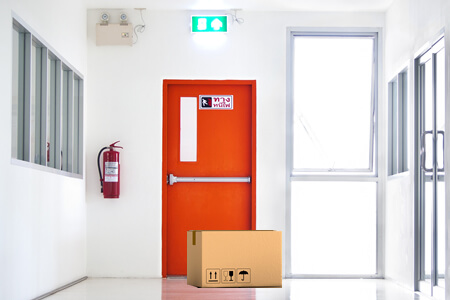Developing an Effective Risk Model
Effective Risk Model Development
First, it’s helpful to define the context of risk in retail. For the purpose of this blog post, we’re discussing risk in the context of potential shrinkage/loss, and safety in the workplace.
A risk model can be defined as an organisational system that pulls together relevant historical data as well as expert viewpoints to better understand the probability of a risk event occurring as well as its potential impact and severity.
Most retailers have some type of Risk Model. For retailers, the risks of loss, customer and employee safety, burglaries, break ins, are not evenly spread. For some retailers, certain locations, and even certain sectors are more at risk than others. This is due to the dynamic nature of the retail sector. A major big box retailer with presence in most states, for instance, will have certain, specific risk factors to address. However, many retailers, regardless of size, location, or sector will have risk commonalities, such as health and safety.
A Risk Model Framework
First we will discuss the framework for designing risk models that retailers can consider when adapting this for their own unique environment. Important factors to consider when designing a framework include; a clearly defined purpose, defined business objectives, how to manage the model in the live retail environment, and the strategy for regular organisational review, validation and amendments.
Each company will have their own method of developing a risk model, and therefore will each have a different output. Most risk models however, contain certain key data elements such as:
- Environmental risk (i.e. police data, demographics, location type)
-Historical results and data
-Dynamic modeling for actual incidents
One method of developing a risk model is to take a total loss approach. This involves compiling information such as; location specific incidents (criminal, performance results) community specific data (law enforcement response, regulatory requirements, community stats), timing and commitments to business objectives (balancing a live model, solution must fit the need).
Developing the Risk Model
A common process for retailers to follow in implementing the risk model is as follows:
- Problem identification (i.e. goal setting, determining what data is available)
- Develop a conceptual model (consider the available alternatives, and if any assumptions are being made or there are any uncertainties)
- Construct the model (deploy Quality Assurance and Test)
- Put the model to use (identify capture errors, test data quality, and compare with observational data)
A risk model should also incorporate risk ranking, which is the process of assigning a figure to risk factors and then ranking them. For example, some organisations rank risk according to severity; i.e. negligible, marginal, critical, and catastrophic. Negligible risks are those that are the least severe and therefore are assigned the lowest rank. It’s important to then consider the likelihood of the risk happening, and assign it as; certain, likely, possible, unlikely, or rare.
An example of a critical risk with a likely chance of occurring in a retail environment is a slip and fall accident caused by a liquid spill on the floor. When assigning this risk with a figure, it would be useful to consult historical data plus carry out research from authoritative sources such as the HSE in the UK and OSHA in the US.
Certain risks, however, can be mitigated through the use of technology. Slip and fall accidents caused by liquid spills for instance, can be prevented by deploying AI technology that works with your existing CCTV cameras to detect liquid spills and send out instant alerts to floor staff. As this particular risk is critical with a high likelihood of happening, investment into mitigating this risk will deliver rapid ROI and will help protect your organisation’s bottom line.
Deploying the Risk Model
It’s important to consider how risk models are being used in a real world retail environment. A retailer might, for example, use it to determine the allocation of staff, opening/closing times, and product range choices.
Some retailers might use their risk model to make Loss Prevention (LP) decisions such as how to effectively allocate the organisational LP team across the retail estate, or in which stores to put investment into LP technology. Operational decisions made with the help of a risk model range from deciding the store trading hours, to decisions on high-theft items.
Ongoing review of the system is crucial, and maintenance and evaluation of the risk model will be necessary to help ensure that the model remains robust. It’s important to bear in mind that there is a fine balance between the frequency of updating and adjusting the new risk model. Overall, ensuring that alignment with all functions in your organisation will help the risk model be the most effective it can be.
_555x390.jpg#192;pageimage;555;390)




